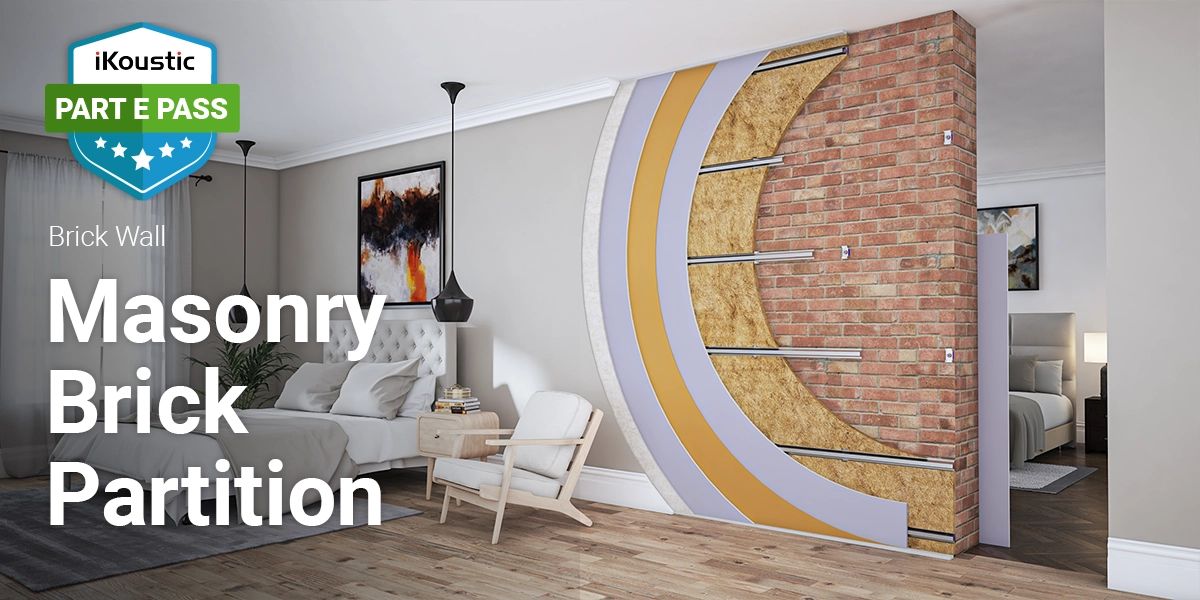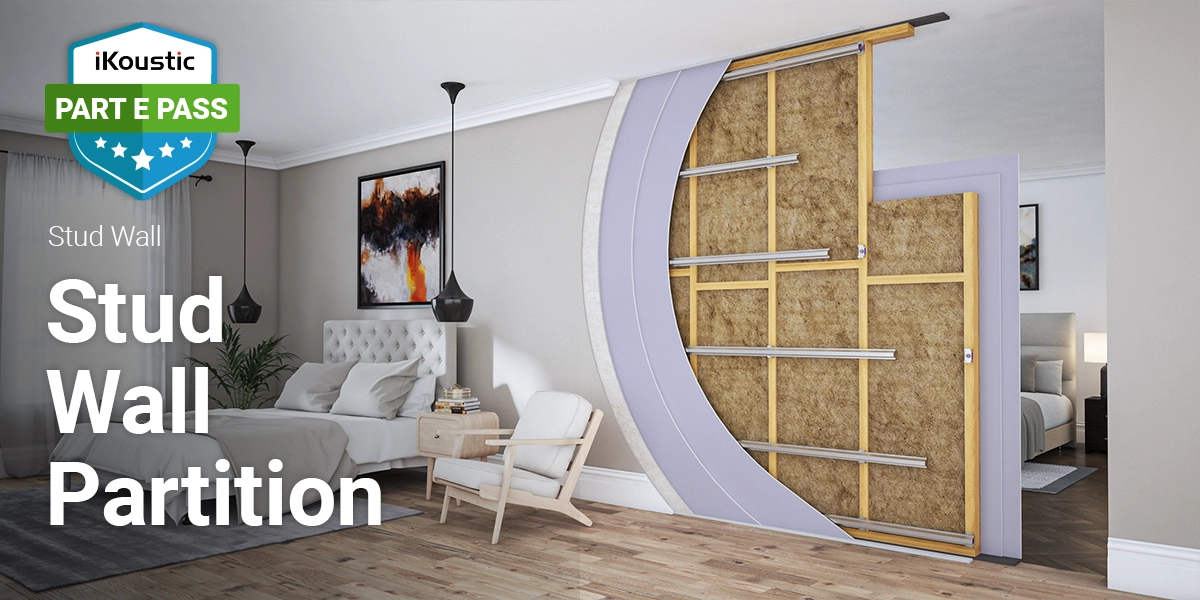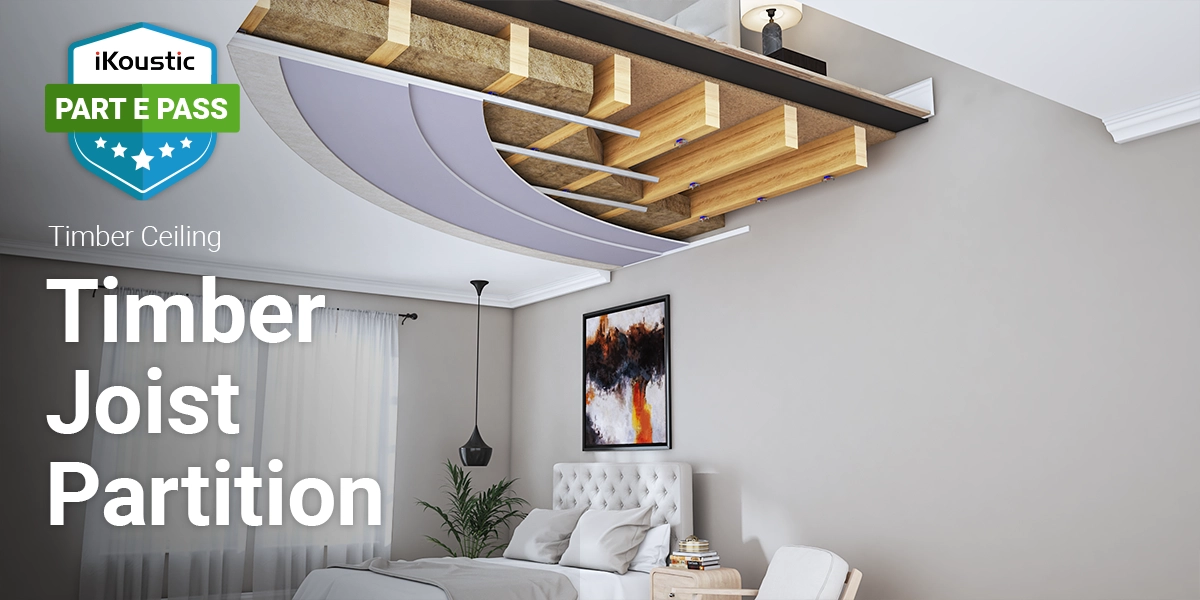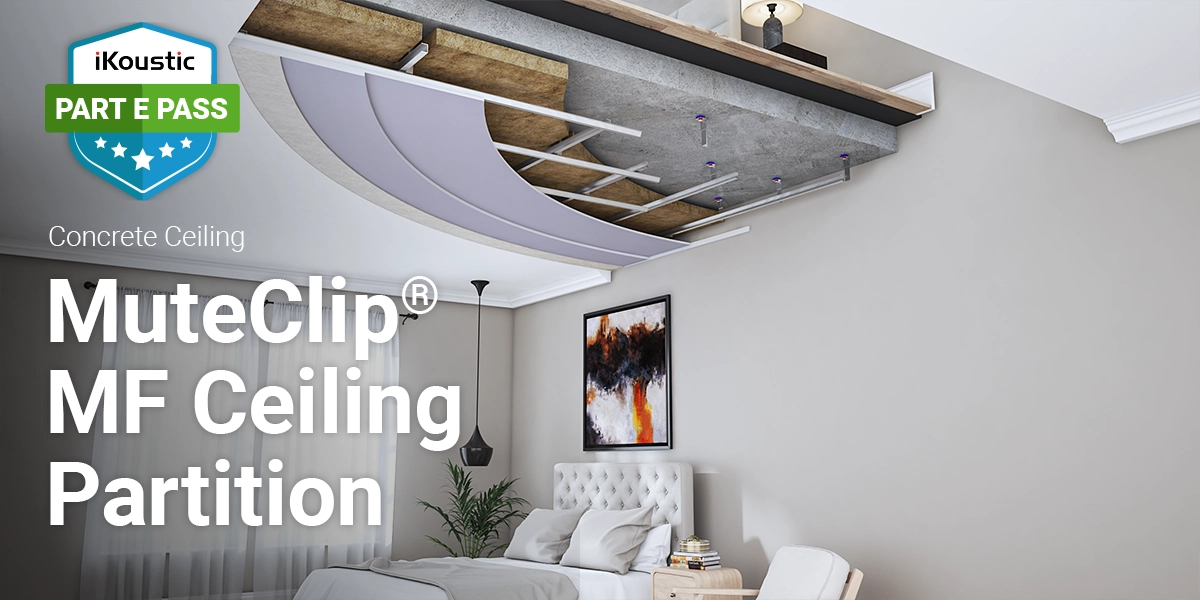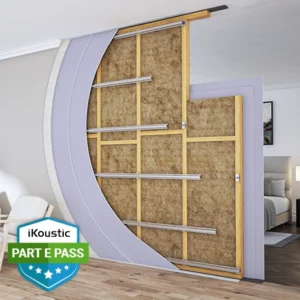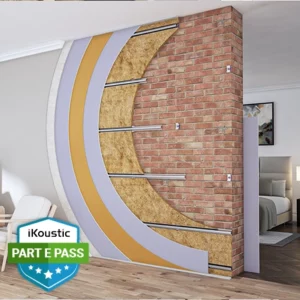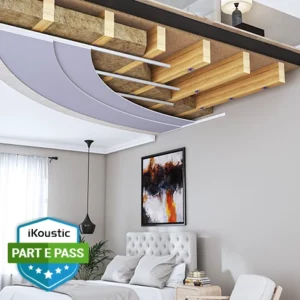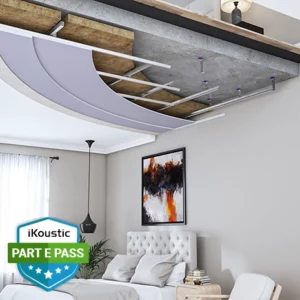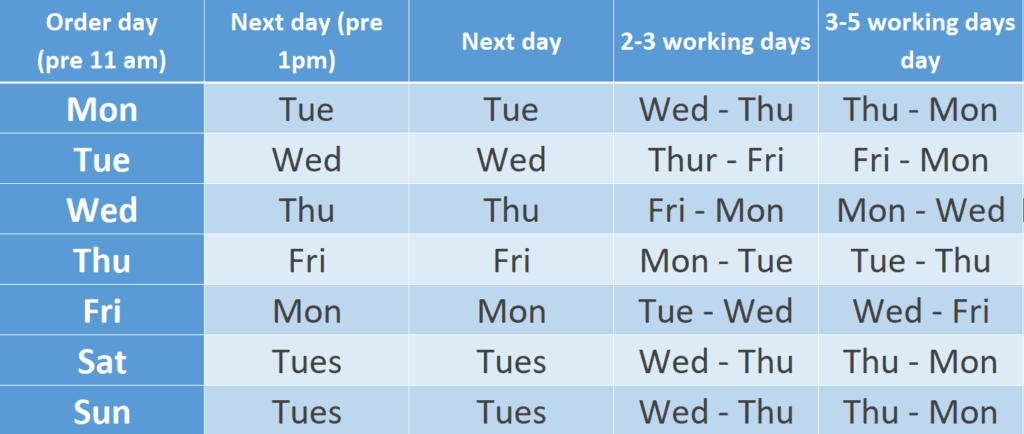Part E Building Regulations and Scottish Building Regulations for the Passage of Sound
Introduction to Building Regulations
The purpose of the Building Regulations is to protect its citizens from excessive and intrusive noise issues that could otherwise disrupt their daily lives, stress is being recognised as a resulting outcome of being subject to excessive noise and is increasingly becoming the topic of discussion and further research, the Building Regulations also provide minimum acoustic targets for select builds across a range of zoning permissions with focus on Residential developments where noise issues are most sensitive.
It wasn’t until 2003 that the UK introduced these regulations under Part E and since then they have received a few revisions – but nothing substantial in the way of change to existing values. It is argued and universally recognised that the Part E Building Regulations is far from a desirable noise target and noise issues found at these levels are still very much audible and although there is no requirement to exceed such values many developers and homeowners are wanting to surpass these to satisfy their prospective tenants for the long term as well as soundproofing their own private housing as places where any noise created has a low impact from room to room.
If you are uncertain of how soundproofing works, we have provided guides to assist you, we also help to explain the science of soundproofing.
Much of the existing UK housing stock is often found below Part E Building Regulations as they did not require retrospective soundproofing when the introduction of the initial and revised regulations were put in place and some often present their own unique issues especially when a Listed Building status comes in to play – Building Control would often advise on guideline targets for these outside the scope of regulations. With those looking to convert a property – the existing housing stock may require an initial acoustic evaluation to obtain acoustic performance values and assess from there the best solution to adhere to the Part E Building Regulations and Scottish Regulations, something we will discuss in detail below.
Preparation stage and possible requirement of initial acoustic testing
Existing Build and Conversions
If you are in process of purchasing a property for personal living or to convert in to flats/apartments or planning for houses of multiple occupancy (HMO) – there are a few considerations you will need to take into account.
- You will most likely want to conduct an acoustic test at first as this will determine whether particular areas or all areas require a certain level of soundproofing – the results will give you current acoustic performance levels and a better idea of what solutions you will most likely require to install in order to satisfy each criteria.
- You will want to have an estimated budget range, as soundproofing when done correctly is often required in multiple areas and can of course be an expense you may not have factored in – we can help guide you through these stages and you may wish to take a look of what we have on offer by clicking on one of the icons below, products are what are in most cases assembled to create an acoustic system – each product will contain a system tab in which will show you which system it is incorporated in to. There are also Guides which we have assembled to help direct you through areas of soundproofing ceilings, walls and floors as well as displaying additional information on reverberation, the principles of sound and Understanding Acoustic Test Results.
New Build
If you are specifying or constructing a new build an acoustically modelled acoustic partition design and the study of existing acoustic test results would be best sought before proceeding with the works – this is so you are able to factor in additional depths of the acoustic systems and their placements to help determine the final room sizes and achievable layouts, floor finishes and servicing.
You will also want to make sure that you are planning noise sensitive areas away from rooms that are known to create excessive or intrusive noise; communal lifts, service rooms that contain boilers or generators and any air conditioning units along with their accompanying extraction units all need to be factored in. If soundproofing has been negated – the difficulty and resulting costs to remedy these becomes far greater when they could of been avoided, the following uncertainty of passing the acoustic test becomes greater due to being unable to review the possible flanking paths or the quality of workmanship underneath.
Brief on Part E Building Regulations
Part E of the Building Regulations covers England, Wales, Northern Ireland and Republic of Ireland (under Document E) as the set of required acoustic values in the UK and Ireland (except for Scotland, which is discussed below). Building Control may also draw your attention to any further acoustic guidelines, requirements or considerations that maybe needed for your property type but generally it is Part E that is the key acoustic target.
Part E Building Regulations covers both airborne and impact transmission between seperate dwellings with airborne targets also required between internal rooms within a dwelling, these are not as high a target but are still important for maintaining desired living conditions and privacy in the home, this is especially imporant when they are situated next to noise sensitive areas, utility rooms and kitchens are usually a concern. Careful planning must be adopted here alongside the correct soundproofing options to ensure suitable living conditions.
Soundproofing options in the UK are in abundance and many solutions are available for passing these requirements and here at iKoustic we have all these on offer for you.
Part E and Document E Regulations for Domestic Sound Insulation Requirements
| Airborne Sound Insulation (DnT,w + Ctr dB minimum values) | Impact Sound Insulation (L’nT,w dB maximum values) | |
| New Build | ||
| Walls | 45 | |
| Floors & Stairs | 45 | 62 |
| Conversions | ||
| Walls | 43 | |
| Floors & Stairs | 43 | 64 |
Part E and Document E Internal Design Requirements
| New Build and Conversions | Airborne Sound Insulation (Rw dB) |
| Walls | 40 |
| Floors & Stairs | 40 |
Part E and Document E Regulations for Non-Domestic Sound Insulation Requirements
(hostels, hotels, boarding houses, halls of residence or residential homes)
| Airborne Sound Insulation (DnT,w + Ctr dB minimum values) | Impact Sound Insulation (L’nT,w dB maximum values) | |
| New Build | ||
| Walls | 43 | |
| Floors & Stairs | 45 | 62 |
| Conversions | ||
| Walls | 43 | |
| Floors & Stairs | 43 | 64 |
Brief on Scottish Regulations
Building Standards Technical Handbook 2017 from the Scottish Building Regulations includes acoustic values that are, in comparison, far more stringent than the values featured in the Part E Building Regulations, in some areas they are expected to be 11dB higher and would often require a robust soundproofing solution in place to what would be expected in the UK and Irish properties. These values offer a much improved quality of living when these results are achieved (which of course depends on the subjective nature of sound and our individual responses to them), these properties would often require an extended budget in comparison. We would advise all properties are tested prior to assess the current acoustic performance and would offer solutions in our upper performing range, especially where light weight constructions are concerned that feature both steel and timber framework.
Scottish Building Regulations for Domestic Sound Insulation Requirements
| Airborne Sound Insulation (DnT,w dB minimum values) | Impact Sound Insulation (L’nT,w dB maximum values) | |
| New Build | ||
| Walls | 56 | |
| Floors & Stairs | 56 | 53 |
| Conversions | ||
| Walls | 53 | |
| Floors & Stairs | 53 | 58 |
Scottish Building Regulations for Internal Design Requirements
| New Build and Conversions | Airborne Sound Insulation (Rw dB) |
| Walls | 40 |
| Floors & Stairs | 43 |
Scottish Building Regulations for Non-Domestic Sound Insulation Requirements
| Airborne Sound Insulation (DnT,w dB minimum values) | Impact Sound Insulation (L’nT,w dB maximum values) | |
| New Build | ||
| Walls | 56 | |
| Floors & Stairs | 56 | 53 |
| Conversions | ||
| Walls | 53 | |
| Floors & Stairs | 53 | 58 |

